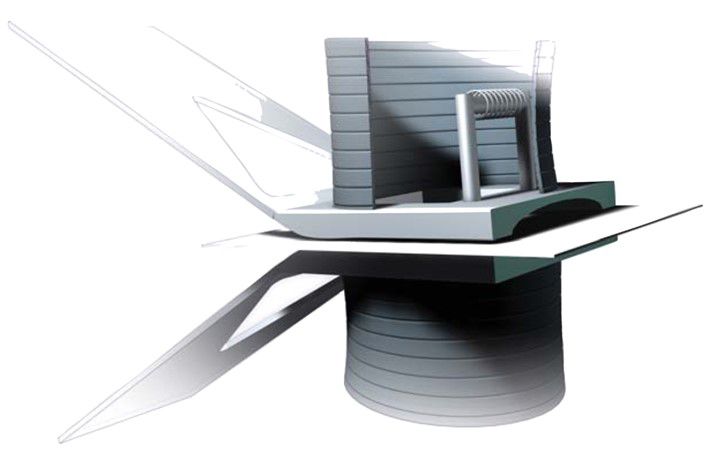Sensors
Caliper Sensors
A uniform sheet caliper profile is an important parameter for product quality and process runnability.
Please sign in to access more documents
Once signed in, you may be able to access additional documents for your account.
Caliper sensors measure the thickness profile of a sheet as it is being produced. Caliper sensors may contact both sides of the sheet, one side, or be non-contacting.
How Does It Work?
Contacting caliper sensors maintain gentle contact with both sides of the sheet and use magnetic inductance to determine its thickness. This measurement technique is suitable for a wide range of sheet manufacturing processes. For sheets with smooth, non-sticky surfaces, a non-contacting, “air bearing”, inductance sensor can be used.
An optical caliper sensor which touches only one side of the sheet is available for paper grades where contacting sensors are impractical or problematic. This reduces measurement inaccuracies associated with stickies, coating build-up, and wear of contacting sensing elements. It also reduces production losses associated with contact-induced holes and sheet marking.
For measuring the total thickness of lithium ion battery electrodes, a non-contacting, optical chromatic confocal displacement, sensor is available.
What Problems Does It Solve?
For paper manufacturers, reel building and runnability issues in converting, printing and sheet handling drive the need for flat caliper profiles. Caliper profile measurement is the foundation for caliper profile control.
For lithium ion batteries, consistent electrode and coating thickness is needed to ensure uniform energy density and conductivity, which are critical to battery performance.
Caliper measurements can be sent to the cloud based QCS 4.0 solution for advanced monitoring, analysis, and further Quality Control System optimization.
Please sign in to view part numbers available for purchase based on your account Sign In


